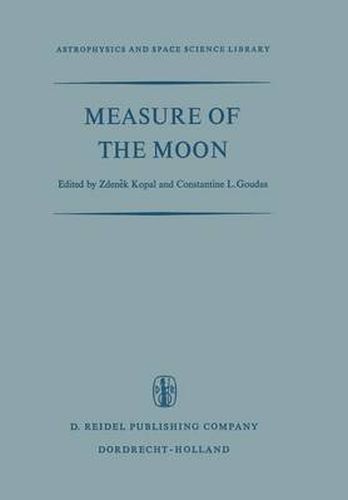Readings Newsletter
Become a Readings Member to make your shopping experience even easier.
Sign in or sign up for free!
You’re not far away from qualifying for FREE standard shipping within Australia
You’ve qualified for FREE standard shipping within Australia
The cart is loading…






This title is printed to order. This book may have been self-published. If so, we cannot guarantee the quality of the content. In the main most books will have gone through the editing process however some may not. We therefore suggest that you be aware of this before ordering this book. If in doubt check either the author or publisher’s details as we are unable to accept any returns unless they are faulty. Please contact us if you have any questions.
After many decades spent in astronomical semi-obscurity, the Moon has of late suddenly emerged to claim renewed interest on the part of the students of astronomy, as well as of other branches of physical science and technology; and the reasons which brought this about are indeed of historical significance. From time immemorial, astronomy has been debarred from the status of a gen uine experimental science by the utter remoteness of the objects of its study. With the exception of meteors - those small freaks of cosmic matter intercepted by the Earth on its perpetual journey through space - the properties of all celestial bodies outside the gravitational confines of our planet could be studied only at a distance: namely, from the effect of attraction exerted by their masses; or from the ciphered message of their light brought to us by nimble-footed photons across the intervening gaps of space. A dramatic emergence of long-range rockets in the last decade bids fair to bring about a profound change in this situation. On September 13, 1959 - a memorable date in the history of human endeavour - a man-made missile of Russian origin crash landed on the surface of the Moon in the region of its Mare Imbrium, and thus ended the age-long separation of the Earth and its only natural satellite which lasted not less than 4t billion years.
$9.00 standard shipping within Australia
FREE standard shipping within Australia for orders over $100.00
Express & International shipping calculated at checkout
This title is printed to order. This book may have been self-published. If so, we cannot guarantee the quality of the content. In the main most books will have gone through the editing process however some may not. We therefore suggest that you be aware of this before ordering this book. If in doubt check either the author or publisher’s details as we are unable to accept any returns unless they are faulty. Please contact us if you have any questions.
After many decades spent in astronomical semi-obscurity, the Moon has of late suddenly emerged to claim renewed interest on the part of the students of astronomy, as well as of other branches of physical science and technology; and the reasons which brought this about are indeed of historical significance. From time immemorial, astronomy has been debarred from the status of a gen uine experimental science by the utter remoteness of the objects of its study. With the exception of meteors - those small freaks of cosmic matter intercepted by the Earth on its perpetual journey through space - the properties of all celestial bodies outside the gravitational confines of our planet could be studied only at a distance: namely, from the effect of attraction exerted by their masses; or from the ciphered message of their light brought to us by nimble-footed photons across the intervening gaps of space. A dramatic emergence of long-range rockets in the last decade bids fair to bring about a profound change in this situation. On September 13, 1959 - a memorable date in the history of human endeavour - a man-made missile of Russian origin crash landed on the surface of the Moon in the region of its Mare Imbrium, and thus ended the age-long separation of the Earth and its only natural satellite which lasted not less than 4t billion years.